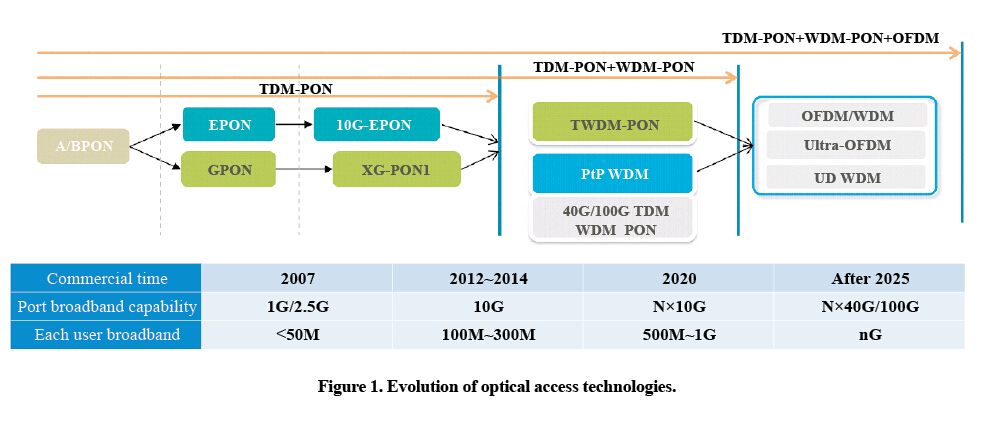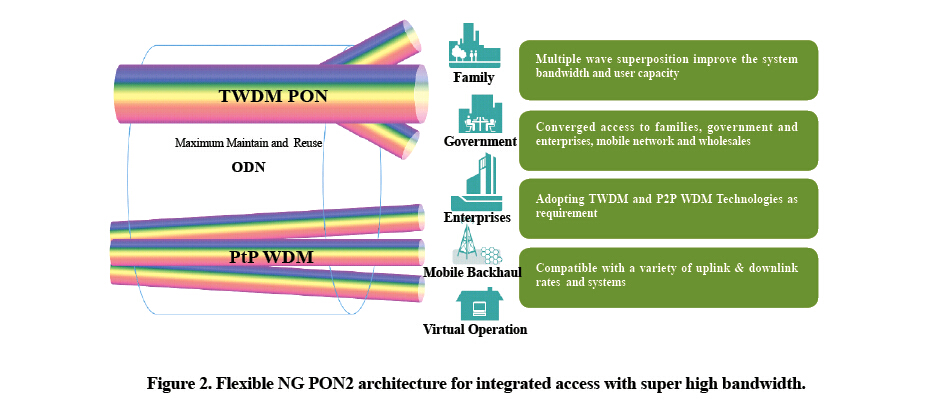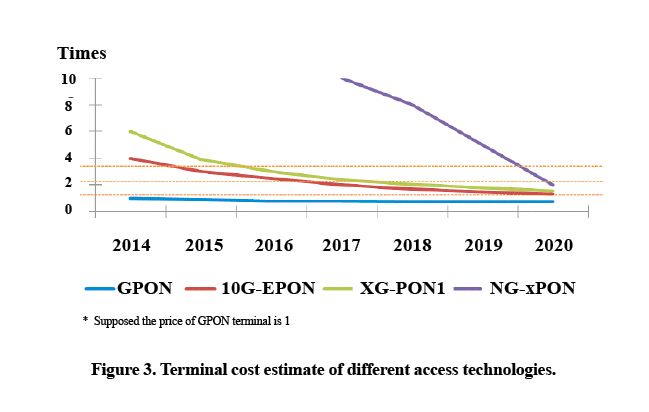1G to the Home: Vision and Initiation
 From 2000 to 2007, ZTE delivered bandwidth via copper networks. Applications were mostly run on PCs, and email, internet browsing, video downloading, and IP telephony were the main sources of network data. Then in 2008, networks based on ADSL2+ began to provide 18 Mbps. When it only took 18 minutes to download a high-definition Harry Potter movie to PC, we thought that the bandwidth needs of households had been fully satisfied. However, smartphones and tablets began a revolution that has not only affected mobile networks but also wired networks, especially in terms of optical fiber.
From 2000 to 2007, ZTE delivered bandwidth via copper networks. Applications were mostly run on PCs, and email, internet browsing, video downloading, and IP telephony were the main sources of network data. Then in 2008, networks based on ADSL2+ began to provide 18 Mbps. When it only took 18 minutes to download a high-definition Harry Potter movie to PC, we thought that the bandwidth needs of households had been fully satisfied. However, smartphones and tablets began a revolution that has not only affected mobile networks but also wired networks, especially in terms of optical fiber.
Nowadays at places such as cafes, airports, residences, or subway stations, smart terminals can be used to facilitate multiple Wi-Fi connections enabled by wired networks. Downloading a HD movie in 18 minutes is no longer satisfactory. Videos from several to dozens of gigabytes take up a lot of hard drive and bandwidth. Now when we Skype, we want face-to-face video with sharp images. We don’t just want online comparison shopping; we want an interactive 3D experience, as if we are really in the shop. Demand for bandwidth is increasing tenfold every seven years.
Due to technology and cost constraints, the communications industry predicts that 1 Gpbs mobile connectivity will only be possible by 2020. However, for wired networks, 1 Gpbs will be available much sooner. ZTE, a leading supplier of fixed networks, has launched a 1G-to-the-home concept and solution that ensures new technology can be installed in existing networks and guarantees network scalability.

Before using a technology, overall consideration needs to be given to service needs, technology/product maturity, input-output calculation, and time-to-market. Technically, the XG-PON1 technology being used to deliver 100-300 Mbps to common subscribers can provide 1 Gbps to high-end and enterprise users (Fig. 1). To satisfy increasing demand for bandwidth, XG-PON1 can also be upgraded to support N × 10G single-mode fiber through wavelength overlapping. This enables 1 Gbps for common users and 10 Gbps for high-end users. The upgrade involves gradual wavelength overlapping, and no structural changes need to be made to the original optical network. While delivering 1G to the home, mobile backhaul can be supported (Fig. 2).

ZTE has estimated the construction costs and expected revenue for GPON, 10G EPON, XG-PON1 and NG PON2 networks over the next several years (Fig. 3). These estimates are based on networks with different technologies in mainland China, Japan, and Hong Kong. They are also based on the previous trajectories of tariffs in telecom industries, equipment cost, and network capacity. ZTE’s estimates reveal that the bulk of network construction cost lies in terminal prices and per-user cost at the central-office side does not vary much with respect to network capacity. The speed at which a technology is commercialized depends on network capacity and cost-benefit analysis. Large-scale commercialization of XG-PON1 is expected to begin in 2014.

When planning for fixed broadband access, demand, technology and economics all need to be taken into account. Network upgrades should be based on market and user value segmentation. For universal coverage, a GPON/10 GPON hybrid network can provide ordinary bandwidth for common GPON users and high bandwidth for high-end 10 GPON users. This guarantees service provision improves ROI. 10 GPON can be used to deliver 100+ Mbps to high-value customers in the near term and 1 Gbps further into the future. Current GPON and XG-PON1 can be easily upgraded to NG PON2 without changing existing ODNs (Fig. 4). A network using XG-PON1 and GPON can first adopt WDM multiplexing and then be upgraded into NG PON2 so that the network is compatible with NG PON, XG-PON1 and GPON terminals.

We produce countless photos and videos that we want to store both locally and in the cloud. We need seamless Wi-Fi coverage for our smart mobile terminals anywhere in the home. We want to watch our children and parents in real time to ensure that they are safe while we work in the office. We want to store super-high-definition movies for future viewing.
Smart terminals are driving the demand for bandwidth and this, in turn, is opening up more possibilities for service planning. As early as 2012, ZTE collaborated with British Telecom to build the world’s first commercial experiments bureau. In 2012 and 2013, ZTE won innovation awards from BBWF and GTB respectively. ZTE has also built commercial XG-PON1 networks for Indonesia PT Telkom and Spain’s Jazztel. Initial testing of the technology, network construction mode planning, and development of intelligent home networks all indicate ZTE’s front-runner position in the optical access field. From ZTE’s perspective, 1G-to-the-home is possible because the technology makes it possible and customer demand is strong. ZTE has taken a crucial step in pioneering 1G-to-the-home networks.